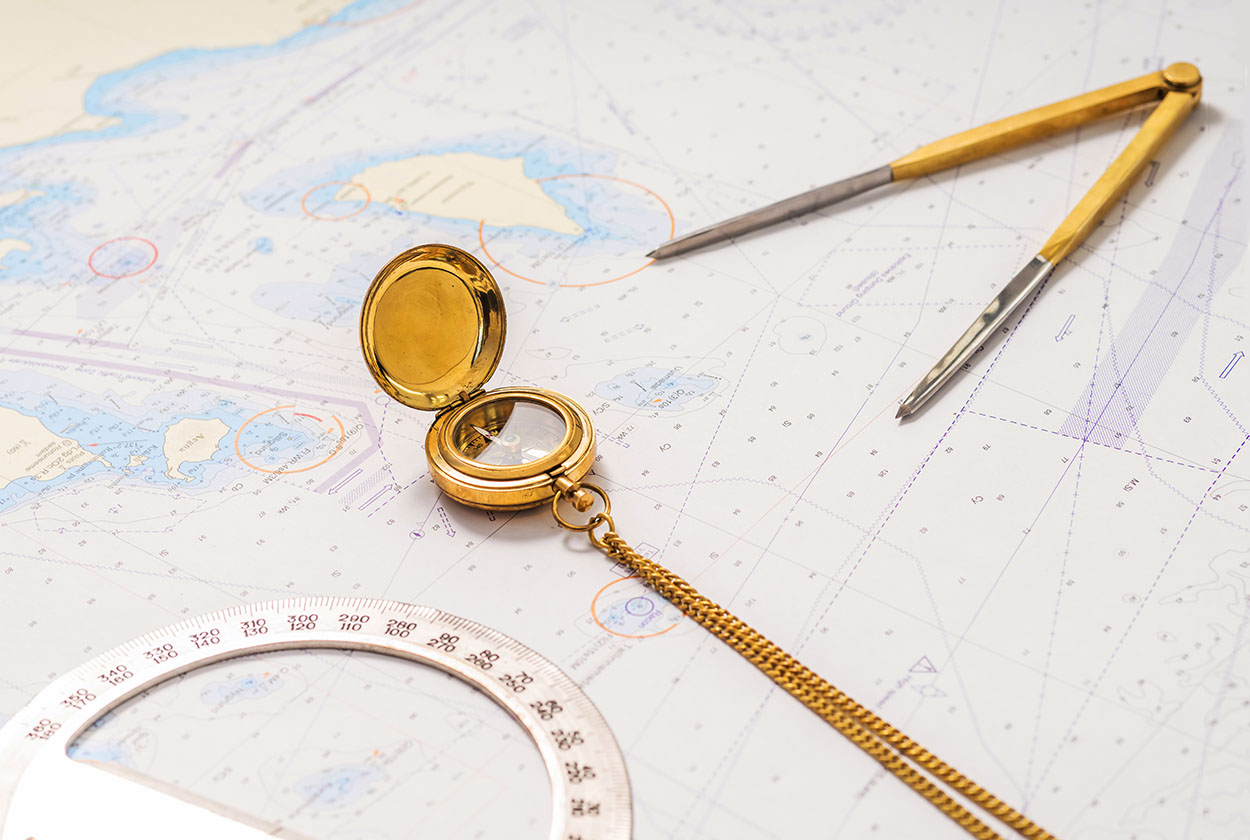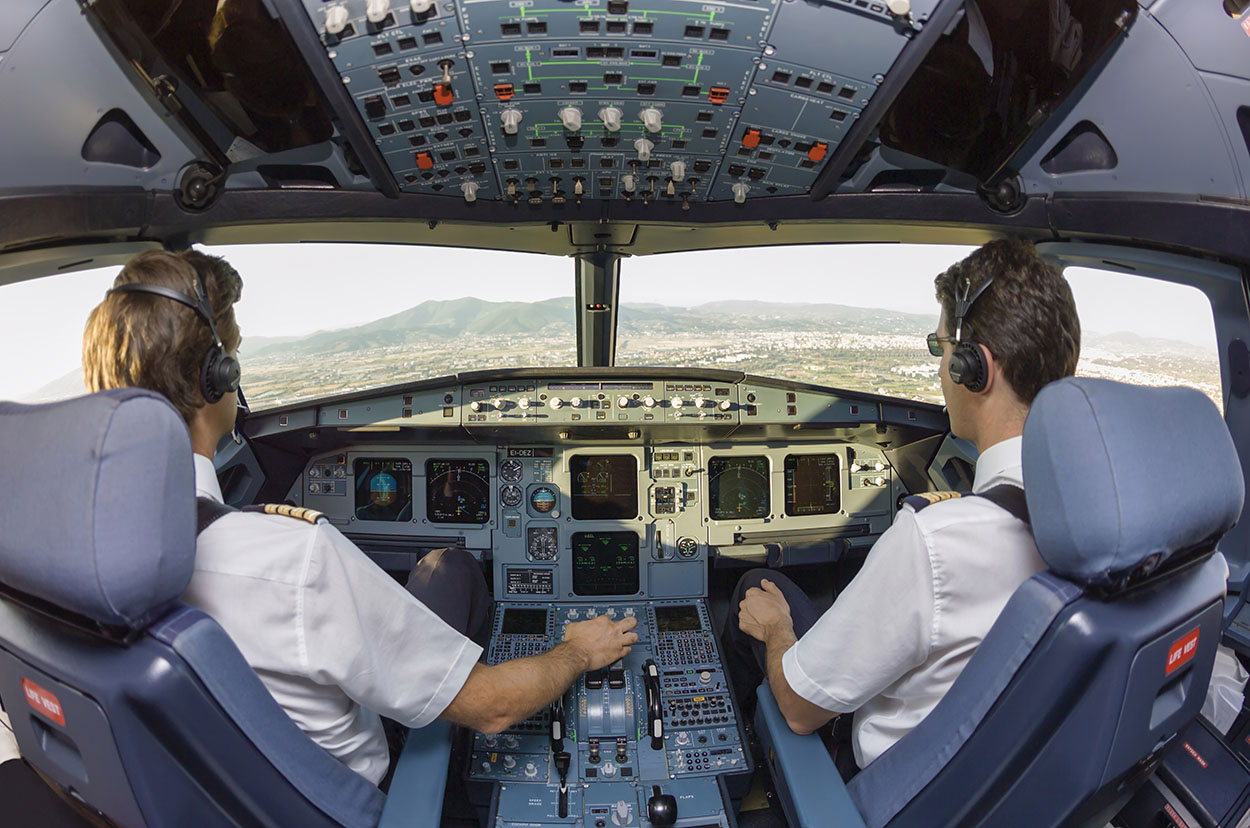The History and Relevance of Units for Measuring Length
- Guide Authored by Corin B. Arenas, published on October 28, 2019
Ever wondered how people used to measure length? Or how they
came to agree with standard units for distances?
In ancient times, people commonly used parts of their body
to estimate length. Old
measurement systems included the foot, which was literally based on the
length of a man’s foot. An inch was the width of a thumb, and a yard was the
length of a man’s belt girdle.
But after a while, people realized not every ‘hand’ or ‘foot’
was equal in size. They knew it was necessary to have a fixed basis for
measurement.
These days, we have refined its standards. One foot is approximately
304.8 millimeters (mm), an inch is 25.4 mm and a yard is 914.4 mm.
In this section, we’ll learn about the origin and significance of the Metric System, the British and American units of length, and Nautical units of Distance.
A Brief History of the Metric System

The metric system
is an international decimal table of weights and measures based on the meter
(metre in British English) and the kilogram. It was originated in France.
In 1795, all metric units in France were based on the metre. Today, it is the most widely used system of measurement in the world.
The process of metrification has been deployed to different
countries since the 1790s, but countries like the United States and the United
Kingdom have not fully adopted it.
| Year |
Timeline of the Metric System (1700s – 1800s) |
|
1790
| France requested the Academy of Sciences to come up with a standard for all weights and measures |
|
1795
|
The metric system was first adopted in France
|
|
1799
| A law validates the metric system as the only legal standard for measuring weight and length in France |
|
1812
|
The height of the French Revolution – Napoleon banned the metric system
|
|
1820
| Luxembourg, Belgium and the Netherlands adopted it |
|
1840
| France officially restored mandatory use of the metric system–it’s remained so ever since |
|
1866
|
Spreads to other European countries and the U.S.
|
|
1875
| The Treaty of Metre in Paris paved the way for international acceptance |
According to the U.S. Metric Association,
in 1790, the National Assembly of France summoned the French Academy of
Sciences to ‘deduce an invariable standard for all the measures and all the
weights.’
At the time, History states
there were almost 400 different ways to measure land in France. To address the problem,
the Assembly took the opportunity to organize measuring standards in the midst
of the French Revolution.
The plan was to change incoherent units with a rational system based on multiples of 10. Those who organized it focused on making a simple scientific system modeled after nature. Finally, the goal was to set a standard that could be used throughout the world.
The following steps were taken to standardize weights and measures:
- The Commission chose the name metre for the unit of length. The term comes form the Greek word metron which means ‘a measure.’
- The unit of length must be a fraction of the Earth’s circumference.
- All the basic units of the system should relate to each other and to nature, meaning volume and mass should be derived from the unit of length.
- Smaller and greater multiples of each unit were to be developed. It should be done by dividing or multiplying the basic unit by 10 or its powers.
- Scientists were also assigned to come up with other units which would be based on the metre.
After the basic units were established, the metric system still
faced disapproval. Though the metre was adopted as the standard unit in 1795, it
was banned by Napoleon in France in 1812.
To verify the system and come up with measurement prototypes, they organized a scientific convention in 1798-1799. By December of 1799, it was made the only legal standard for measuring length and weight in France.
Despite a series of objections, in 1820, countries such as Luxembourg, Belgium and the Netherlands adopted it. By 1840, France officially restored mandatory use of the metric system, and has remained so ever since.
Around 1866, its slowly spread to other European countries
as well as the United States, where its use was legal but not compulsory.
In 1875, the International Bureau of Weights and Measures
held the Treaty
of Metre in Paris. This earned international acceptance for the metric system.
The agreement officially provided a laboratory where international
measuring standards are maintained, along with metrological research. This
enabled worldwide distribution of complete metric standards.
It paved the way for the General Conference on Weight and Measures (CGPM), which convenes every 6 years to discuss periodic revision and improvement of current standards.
The Advantages of the Metric System

Sciencing.com
states that the metric system allows people to perform conversions easily. Since
it’s practically used in every country (apart from the U.S. and some selected
countries), it’s a consistent global unit of measure.
Unlike the British or American units of length, which is more complicated to convert, the metric system uses multiples of 10. This means you can perform convertions from small to large units by simply moving decimals to another place value.
For instance, with meter as the basis, 1 m is equal to 100
cm, just as 1 m is equal to 1000 mm. Moving decimal places to the right allows
us to convert to smaller units.
| Measure |
Unit |
|
|
|---|
|
Meter
|
1
|
|
Centimeter
|
100
|
|
Millimeter
|
1000
|
Now, if we take 32 meters, it’s equal to 3200 cm, as well as
32000 mm. You’ll notice this method of conversion is consistent no matter what
values are assigned.
|
Measurement
|
Unit
|
|---|
|
Meter
|
32
|
|
Centimeter
|
3200
|
|
Millimeter
|
32000
|
Consistency and continuity are vital in communicating information. That’s why the metric system is beneficial for schools as well as scientific communities who deal with measuring all sorts of data.
The metric system is employed in almost every discipline, including data-driven fields such as engineering, computer science, medicine and chemistry. It’s also used in manufacturing, machinery and the NASA space probes.
This ensures that students, teachers and scientists all over the world can rely on one standard system of measurement to represent data accurately.
However, there’s one disadvantage to the metric system: it’s not well equipped for computing fractions. For example, one-sixth of a meter is 167 millimeters, which encourages the use smaller of units.
History of the British and American Units of Length

The British Imperial
System was officially used in Great Britain from 1824 until the broad implementation
of the metric system in 1965. The U.S. unit of length is based on the Imperial
System, which is now defined in metric standards.
The standards for measuring first began in Winchester, which
is where king Edgar the Peaceable (in the 10th century) is said to have used a
royal bushel for measuring.
Around the 1300s, records showed how early measurements were used by the people. For instance, an inch was approximately the length of 3 barley corns. The yard, which was initially derived from a stick, is estimated to be around 3 feet.
By the mid-1400s, Winchester standards were reestablished by King Henry VII. It was considered the traditional standard for length and volume throughout the kingdom. According to Britannica, it was also adopted by Queen Elizabeth I in the 1500s. During her time, the rod was described as ‘the length of 16 men’s left feet, lined up heel to toe as they emerged from church.’
In the 1600s, units such as the furlong, rod and acre were defined, which carry their present values. 660 feet for 1 furlong, 16.5 feet for a rod and 4,840 square yards for 1 acre.
Towards the 1800s, based on the precise definition of chosen
units, the Imperial System was established through the Weights and Measures Act
of 1824 and 1897.
By 1959, many English-speaking countries adopted the metric
definitions of Imperial units. These include:
- 1 inch = 2.54 cm
- 1 yard = 0.9144 metres
- 1 pound = 0.4536 kg
In 1963, a law in the United Kingdom abandoned archaic units of measurement such as the rod and the chaldron. A chaldron was originally thought to be a measure of coal equivalent to 36 bushels.
British and American units of length and weight essentially
follow the same system, with the following exceptions:
- British stone – 14 pounds
- Hundredweight – 112 pounds
- British ton – 2,240 pounds
The Advantages of the Imperial System

While the Imperial system is not the most widely used unit,
there are reasons this type of measurement persists.
For one, it evolved to organically accommodate real world needs, says Pelle Braendgaard, a technical lead based in Nicaragua. He says these real-world measurements give people a basic idea of how objects are used.
Many of the old measurements have been abolished, but the useful ones still prove to be relevant. From the usability standpoint, a 15-inch envelope is easier to relate to than 38 cm. In reality, 5 feet 2 inches sound a lot shorter than 157.48 cm, especially if you’re not familiar with the average height in cm. Moreover, pounds and cups often convey actual portion sizes that people use when they cook.
Finally, compared to the metric system, it’s easier to think in terms of fractions or portion sizes in the Imperial system (such as half a pound, ¼ cup, etc.) than in metric terms.
Nautical Units of Distance

A nautical
mile is defined as 1,852 meters or 1.852 kilometres. It’s based on the circumference
of the earth (equator) and is equal to one minute of latitude.
According to the National
Ocean Service, it is slightly more than a statute mile (land mile), with 1
nautical mile equal to 1.1508 statute miles. When converted to the British
system of measurement, 1 nautical mile is equal to 6,076 feet.
What is the basis for the measurement? The idea is
that the equator can be divided into 360 degrees. One degree can be cut into 60
minutes, where 1 minute of arc on the Earth’s circumference is equal to 1
nautical mile.
Who Came Up with Nautical Units?
Around 1690, Gabriel
Mouton, the vicar of St. Paul’s Church in Lyons, France, proposed a special
unit of length which he called the ‘mille.’ It was based on 1 minute of arc in
the great circumference of the Earth (equator).
In 1670, he published his most influential book ‘Observationes diametrorum solis et lunae apparentium’ where he included ideas on standards for length measurement.
Mouton was one of the first to suggest an organized method
of labeling measurements. He proposed names for decimal multiples and
submultiples for the basic unit of length.
However, because of the constraints of his era, his ideas
were not widely recognized. It took the French more than 100 years to consider
his suggestion. And even then, the French commission preferred a different
definition of the metre than what he suggested.
How Nautical Units Benefit Sailors and Aircraft Navigators

Using nautical miles while sailing or flying makes chart
reading easier. In navigation, chart reading involves reviewing maps which use latitude
and longitudes for distinguishing locations.
According to The Guardian’s archive, since one minute of latitude is equal to one nautical mile, it allows pilots and sailors to instantly assess multiples of miles with their thumb or any handing measuring stick.
This is crucial especially if the chart table is overly crowded. Reading measurements according to latitude also helps pilots estimate travel time.
The Bottom Line
Different standards were used by people in the ancient times to measure length. While traditional units still persist, scientists developed an international standard for measuring length and weight.
The metric system was developed by the French in the 1700s and was widely adopted in the mid-1900s by many countries. Meanwhile, the British Imperial System was first used by Great Britain in the early 1800s. This was adopted by the U.S. and is still in use today.
Though metrification has been instigated in the U.S. and the United Kingdom, these countries still use the Imperial System.
Nautical units of length benefit sailors and pilots. It’s
the best system to use while traveling because it counts 1 nautical mile as 1
minute of latitude. It helps navigators pinpoint their location as well as estimate
travel time.
About the Author
Corin is an ardent researcher and writer of financial topics—studying economic trends, how they affect populations, as well as how to help consumers make wiser financial decisions. Her other feature articles can be read on Inquirer.net and Manileno.com. She holds a Master’s degree in Creative Writing from the University of the Philippines, one of the top academic institutions in the world, and a Bachelor’s in Communication Arts from Miriam College.
 Lenght Converter Tool
Lenght Converter Tool
